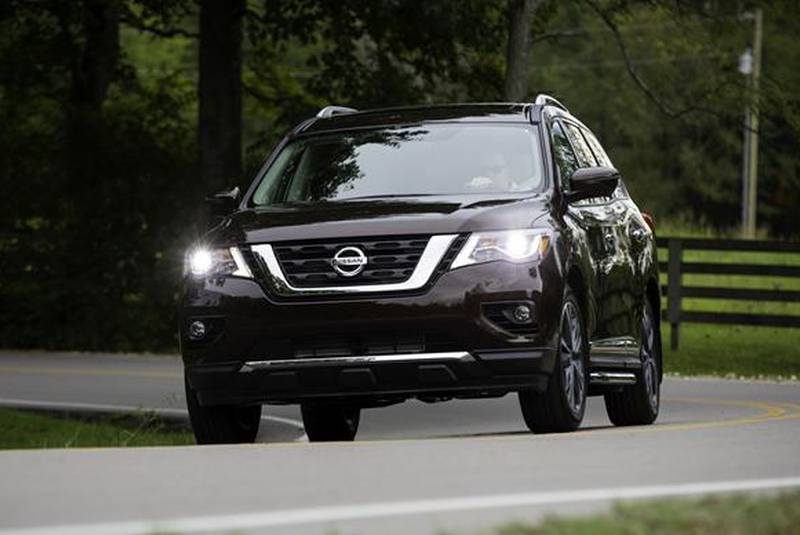
Protecting rear-seat passengers can be done many ways.
Seat belts are still the primary protection device for adults and larger children, while child seats held in place by seat belts are still the most common type of protection for small children.
There have been many improvements in seat belt design and operation since they became standard equipment on most vehicles in the late 1960s.
Seat belts now extend at controlled rates during a collision so the passenger is decelerated with less stress.
On the 2011 Explorer, Ford introduced an option — rear-seat inflatable seat belts in rear outboard positions that spread the force of a collision over a wider portion of the occupant’s chest.
In the past couple years both GM and Nissan have introduced systems that protect young passengers in other ways.
Nissan’s “rear door alert” system, first introduced in the Nissan Pathfinder just last year monitors the vehicle’s doors.
If a rear door is opened before the vehicle drive starts then, when the driver exits the vehicle, the system displays a message on the instrument cluster and honks the horn to remind the driver to check the back seat.
Children have been forgotten in the back seat of vehicles and can quickly be harmed by the interior temperature of a vehicle on a warm day.
It can also help remind one to remove the groceries from the back seat before the ice cream melts or the fish goes bad.
GM is using a similar system, called the “rear seat reminder.” Similar to the Nissan system, it monitors rear doors within 10 minutes before a vehicle is started and after a vehicle is started to see if the rear doors have been opened. When the driver exits the vehicle a message is displayed and chimes sound to remind the driver to check the rear seat.
Manufacturers are now finding new ways to help protect rear seat passengers.
Jaguar has introduced its “clear exit detection” as part of the pedestrian safety suite in the 2019 Jaguar I-Pace vehicles.
Sensors in the rear bumper, the same ones used for the Blind Spot Information System, monitor vehicles and bicycles as they approach along side the parked I-Pace.
When a rear-seat passenger reaches for the rear interior door handle the motion is detected inside and a white symbol illuminates by the door handle to indicate the system is working and all is clear to exit the vehicle.
If opening the door will create a hazard to other traffic or danger to an exiting passenger, the icon changes to an amber colour to warn the passenger of the danger.
This system also helps protect bicycle riders who often ride close to parked vehicles so they are away from moving traffic.
Hyundai calls their system “safe exit assist” and it is now available on the new 2019 Santa Fe, which composes a large percentage of Hyundai sales.
Like the Jaguar system, Hyundai uses radar sensors for the blind spot information system to monitor approaching traffic up to 70 metres behind and three metres from the side of the parked Santa Fe.
If there is an approaching vehicle or bicycle beside the parked Santa Fe, then an audible warning is sounded over the vehicle’s audio system and the rear-door interior handles are deactivated so the passenger cannot exit.
This system stays active for up to 10 minutes after the ignition is turned off.
Hyundai’s “safe exit assist” replaces the child safety lock feature on earlier models that disabled the interior rear-door handles.
Now the driver can activate the system by pressing the power window lock button, which also turns the “safe exit assist” on or off.
This system also automatically deactivates the rear-door handles when the vehicle is moving.
When the vehicle is parked and the doors unlocked, the rear-door handles function again unless a warning is activated. Then the door handles deactivate.
The driver can reactivate the door handles and let passengers exit by pressing the power window lock button again to turn the system off.
Technology is constantly evolving and auto manufacturers continue searching for ways to make vehicles safer.
As seen by these rear-seat safety systems there are many ways of protecting vehicle occupants.
Jim Kerr is a master automobile mechanic and teaches automotive technology.


